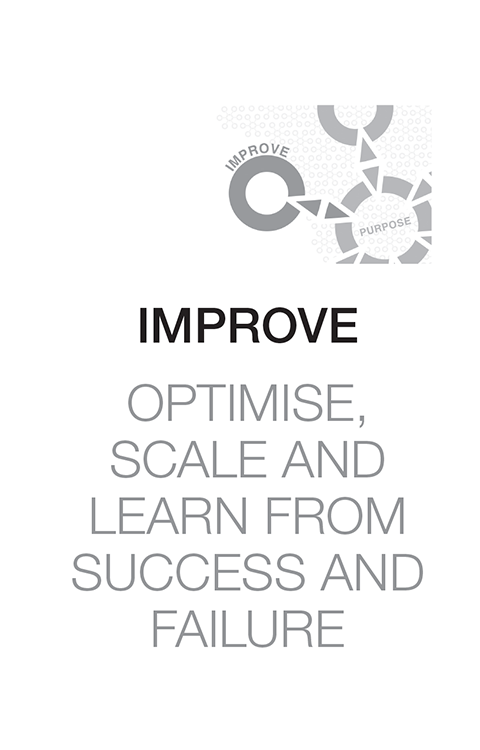‘Could you look at creating a talent development project in China where local HR managers could facilitate the Model on innovation projects?’ I was asked by a client. We had been eight years in Asia and The Six ‘I’s® had begun to extend into the original Purpose that I had when I created it. ‘How about an online tool kit where individuals, dispersed in global teams across the world, could access innovation tools to apply to new business challenges?’ said another.
Many ideas for improvement have come with the practical use and application of the Model on real organisational challenges, others at the request from clients. When I reflect back over my innovation journey in creating The Six ‘I’s®, what started off as a simple circular diagram has now become a suite of online applications, profiling instruments, certification programmes, merchandising, tool kits and games. It has been, and continues to be, a journey of continuous improvement, going backwards and forwards across the six stages of the Model. In collaborating with clients, we have been able to investigate through prototyping and developing new applications that directly meet their needs and, in so doing, meet the needs of other organisations. And we continue to keep investing, implementing and improving what we have by extending the original idea into other identified areas of opportunity. We now have a product development pipeline that will take us far into the future.
It was as if what could have been seen as a set of random events and experiences of my life came together – strategising new markets for learning, being employed in a large research organisation, digital product development, my love of psychology and culture, training, facilitating and consulting, plus the network of contacts that I had developed over time – combined to give a launch pad to build something that has been of value to many individuals and organisations around the world.
We all sit on a mountain of value – our experience, knowledge, skills and networks – yet often we do not see what is right before our eyes. We do not see what we can improve and how we can maximise and leverage what we already have. Many individuals and organisations can bypass this very rich and rewarding phase of innovation altogether, chasing after another idea and missing the low-hanging fruit of opportunity that stares them in the face. Sometimes, in our initial vision, we can see what the possibilities are, but we lose sight of them amidst the difficulties and challenges of trying to make a new idea work. While chronologically, improve is the last ‘I’ we have discussed, The Six ‘I’s® is not a linear process. It is a circular Model, and improve can often be the starting point for doing something new.
I share this story to illustrate how what started out as a simple idea for just a conceptual model has grown into something far more valuable, and is now even the subject of this book that you are reading. Improve, how to maximise and leverage ideas, is the subject for this chapter.
Throughout, I will give examples of practical ways to help boost your ability and confidence to improve on ideas.
Improve is central to innovation, for it can often bring quick ways of generating more value out of something that already exists. The improve phase of innovation involves being able to generate many ways to make an idea better and seeking opportunities to improve on ideas with a variety of people, customers or stakeholders. This is important as innovative outcomes can often be generated from optimising and extracting more value out of an idea that already exists. It is the end user, or customer, who can often give the best suggestions on how something could be improved.
Capturing learning so that there is continuous improvement and creating a culture where people can learn from failure are also important as they encourage individuals and groups to reflect on their own behaviour and learn from the past.
Like investigate, the freedom to experiment and, therefore, potentially fail, is part of the improve phase. It requires discovering new ways of doing things through trial and error. It is about building a mindset of learning into the whole of the innovation journey and the way that we work.
Reviewing and assessing what has worked and why or why not, and communicating successes and lessons learned, can help to create a culture of continuous improvement. Bringing learning to life, through the power of story, will also enable you to weave together your experiences in a memorable way. To be good at improve requires a clever mindset.

